A Superb Large French Napoleonic Prisoner of War Work Model of H.M.S ‘Temeraire’
A Superb Large French Napoleonic Prisoner of War Work Model of H.M.S ‘Temeraire’ a Royal Navy 98 Gun Second Rate Ship of the Line
With bone planked hull pinned to a wooden framework baleen gunwales and turned brass cannon the stern quarter gallery carved from a single piece of bone with name plate ‘Temeraire’ the balustrades attached a Royal Armourial of the Lion and Unicorn carved above
The polychrome painted figurehead depicting the Roman God of War
Finely detailed elements including mica glazed lanterns in the rigging buckets buoy’s and longboat rigged to the stern
Mounted on an original decorative marquetry worked wooden base board with carved bone balustrading
Circa 1805 - 1815
Size: 69cm high, 102cm long, 32.5cm deep - 27¼ ins high, 40 ins long, 12¾ ins deep / base: 6cm high, 87cm long, 26.5cm deep - 2¼ ins high, 34¼ ins long, 10½ ins deep
20th century custom made display case (circa 1960’s): 84cm high, 126cm wide, 46cm deep - 33 ins high 49½ ins wide, 18ins deep
With bone planked hull pinned to a wooden framework baleen gunwales and turned brass cannon the stern quarter gallery carved from a single piece of bone with name plate ‘Temeraire’ the balustrades attached a Royal Armourial of the Lion and Unicorn carved above
The polychrome painted figurehead depicting the Roman God of War
Finely detailed elements including mica glazed lanterns in the rigging buckets buoy’s and longboat rigged to the stern
Mounted on an original decorative marquetry worked wooden base board with carved bone balustrading
Circa 1805 - 1815
Size: 69cm high, 102cm long, 32.5cm deep - 27¼ ins high, 40 ins long, 12¾ ins deep / base: 6cm high, 87cm long, 26.5cm deep - 2¼ ins high, 34¼ ins long, 10½ ins deep
20th century custom made display case (circa 1960’s): 84cm high, 126cm wide, 46cm deep - 33 ins high 49½ ins wide, 18ins deep
An epitaph found inscribed on a headstone in a churchyard in Odiham, Hampshire, put up in memory of a French paroled prisoner of war, Pierre Julian Jonneau, who died there on the 4th September 1809, aged 29, accurately displays the sympathy felt at the time for both the famous ship Temeraire and for the Napoleonic prisoners of war. (An extract of eleven verses): 1,2,3 and 4;
Ode to a Prisoner of War Bone Ship Model
The Fighting ‘Téméraire’
No tusk from trackless jungle brought,
No bone of slaughtered whale
Her wreathed and Tritoned sternposts wrought
And bulwarks eggshell frail.
Mellow as ancient ivory
And fine as carven jade,
From beef-bones of captivity
The shapely hull was made,
Whose making helped upon their way
Such limping hours and slow
As measured out the leaden day
That none but prisoners know.
Still, though the world in change bewhelmed,
From the small mimic bows
The antique warrior, mailed and helmed,
Looks out with frowning brows,
Like those beneath whose sightless stare
The sullen smoke-drift rolled
Round her, well named the ‘Témeraire’,
In famous fights of old
Or is, upon some gravestone hoar,
The legend plain to see:
‘He was a Prisoner of War,
But Death has set him free’?
Between 1803 - 14 it is estimated some 122,000 captured soldiers and sailors were brought to Britain where they were incarcerated and lived under dire circumstances. It is a curious fact that many of the greatest works of art have been created in places and under conditions which one would think would have mitigated against any success in the construction of a masterpiece.
The prisoners did not work from scale plans and so the ship models were often not accurate portrayals of the vessel they had graced with its name. Allowed to sell their wares to the local populace many of them were commissioned to produce favourite and more expensive works of art. The ‘Fighting Temeraire’ was one of the last second rate ships of the line to have played a distinguished role in the Battle of Trafalgar in 1805 and became a famous symbol of British naval victory.
Ode to a Prisoner of War Bone Ship Model
The Fighting ‘Téméraire’
No tusk from trackless jungle brought,
No bone of slaughtered whale
Her wreathed and Tritoned sternposts wrought
And bulwarks eggshell frail.
Mellow as ancient ivory
And fine as carven jade,
From beef-bones of captivity
The shapely hull was made,
Whose making helped upon their way
Such limping hours and slow
As measured out the leaden day
That none but prisoners know.
Still, though the world in change bewhelmed,
From the small mimic bows
The antique warrior, mailed and helmed,
Looks out with frowning brows,
Like those beneath whose sightless stare
The sullen smoke-drift rolled
Round her, well named the ‘Témeraire’,
In famous fights of old
Or is, upon some gravestone hoar,
The legend plain to see:
‘He was a Prisoner of War,
But Death has set him free’?
Between 1803 - 14 it is estimated some 122,000 captured soldiers and sailors were brought to Britain where they were incarcerated and lived under dire circumstances. It is a curious fact that many of the greatest works of art have been created in places and under conditions which one would think would have mitigated against any success in the construction of a masterpiece.
The prisoners did not work from scale plans and so the ship models were often not accurate portrayals of the vessel they had graced with its name. Allowed to sell their wares to the local populace many of them were commissioned to produce favourite and more expensive works of art. The ‘Fighting Temeraire’ was one of the last second rate ships of the line to have played a distinguished role in the Battle of Trafalgar in 1805 and became a famous symbol of British naval victory.
A Superb Large French Napoleonic Prisoner of War Work Model of H.M.S ‘Temeraire’
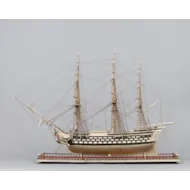
SOLD
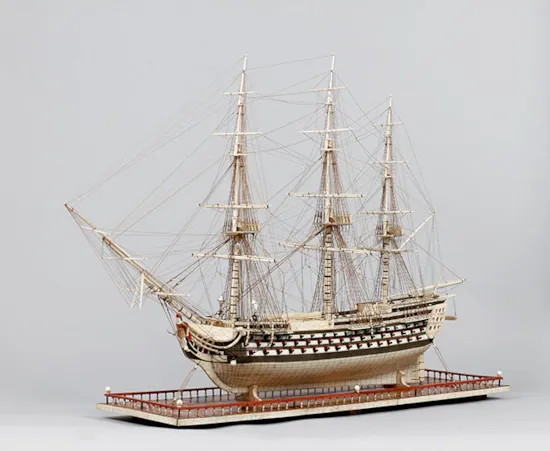
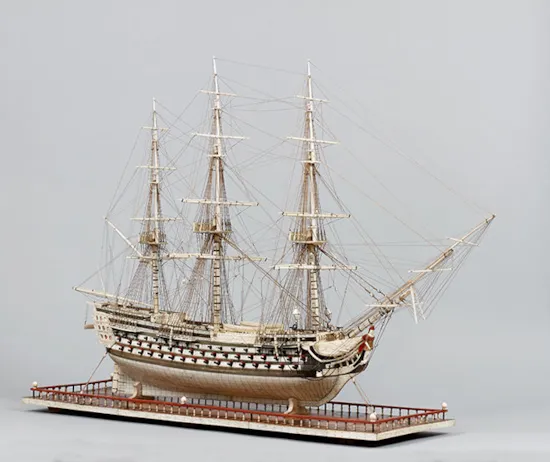
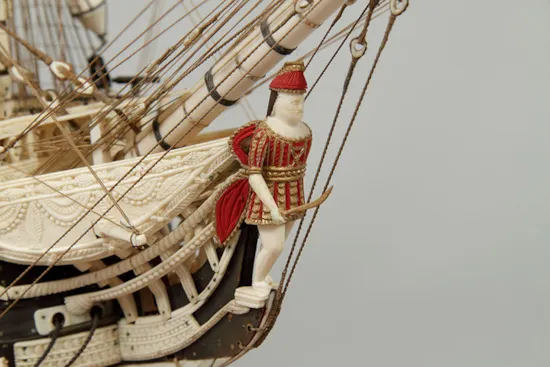
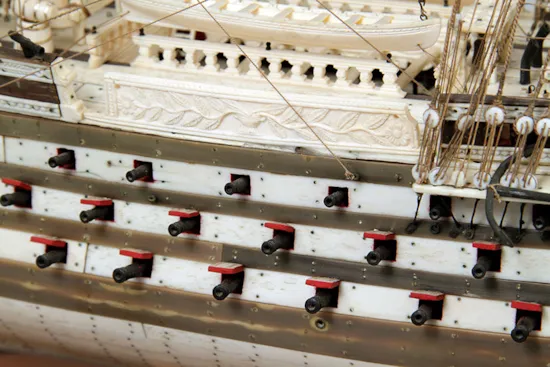
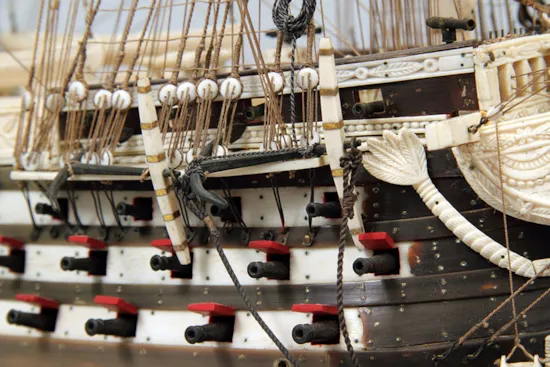

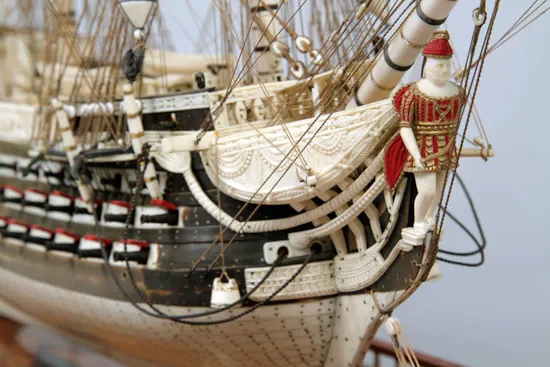
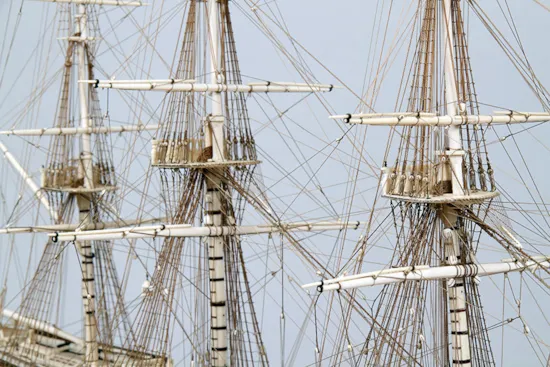
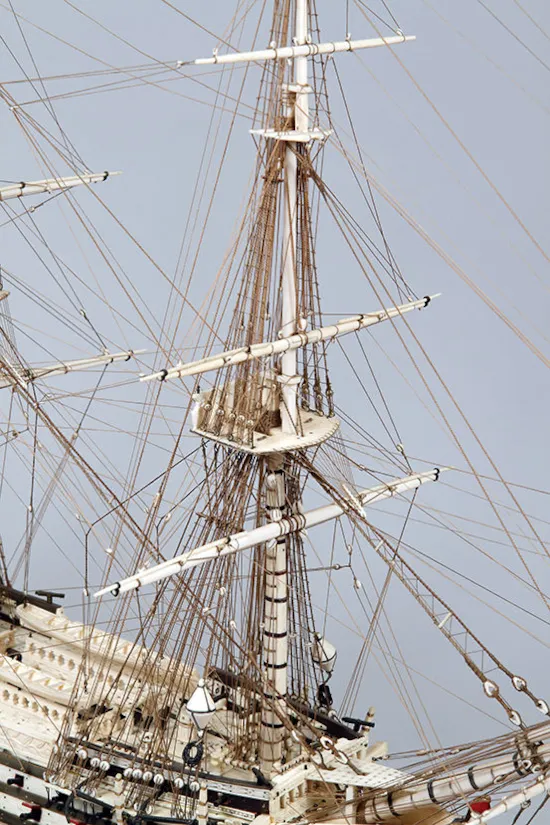
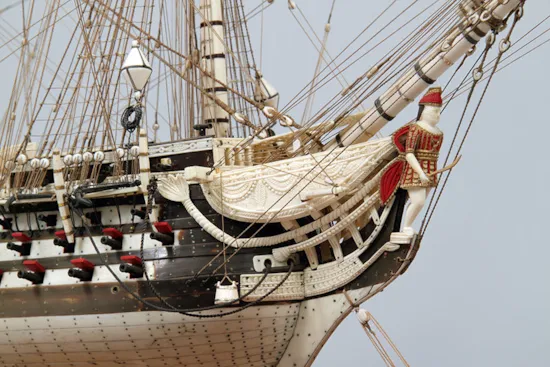
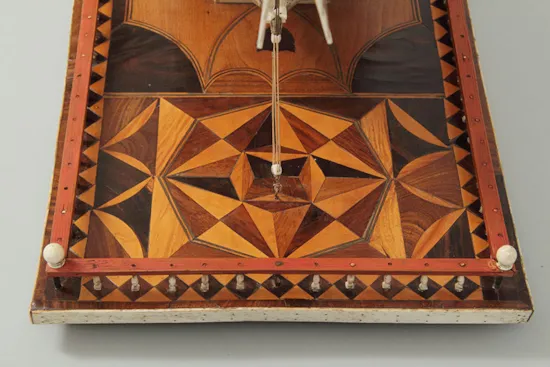
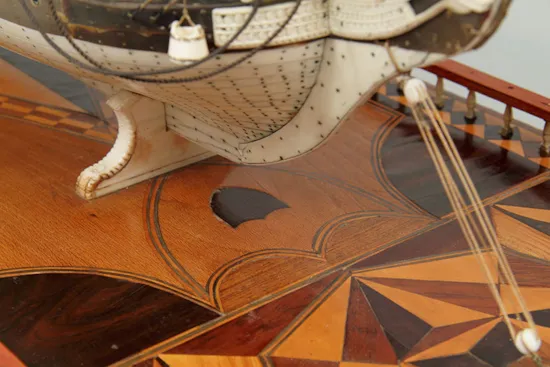
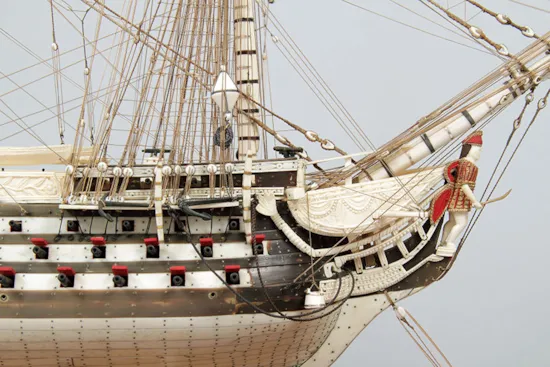
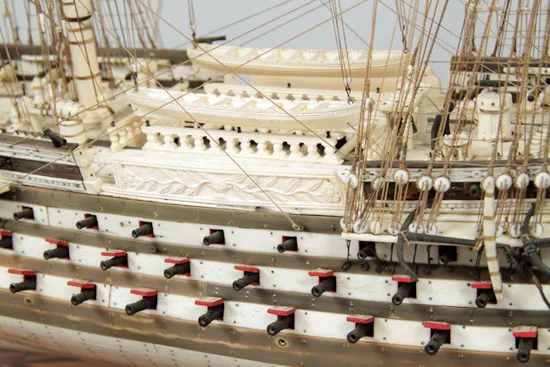
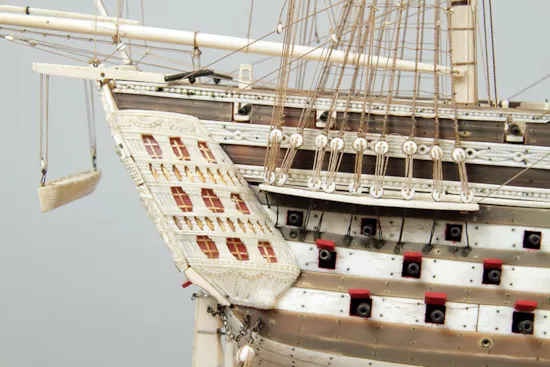
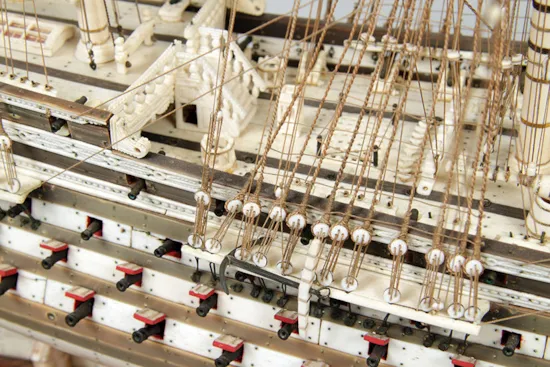
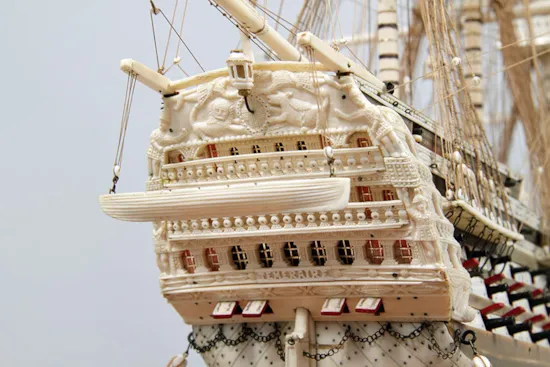
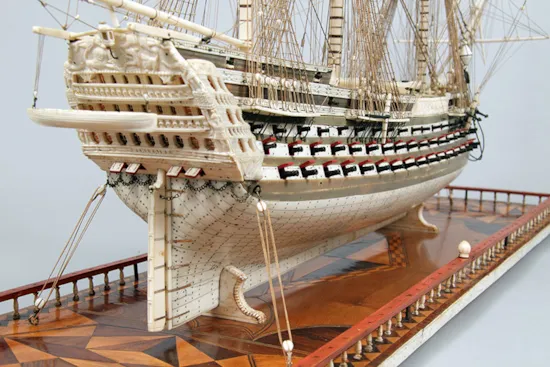
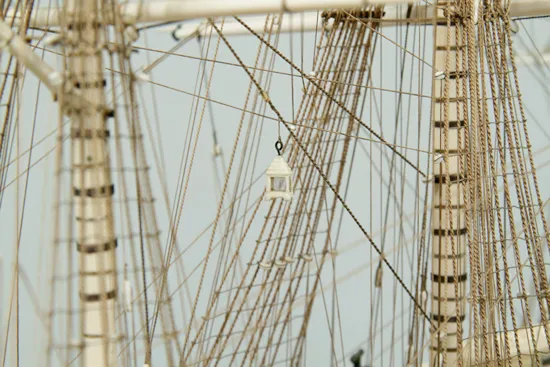
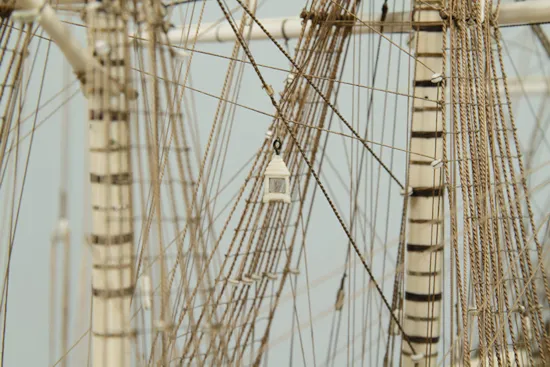
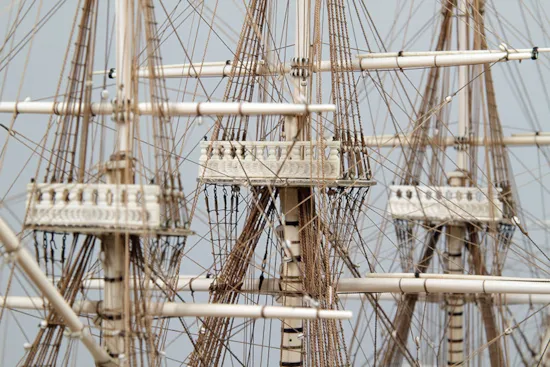
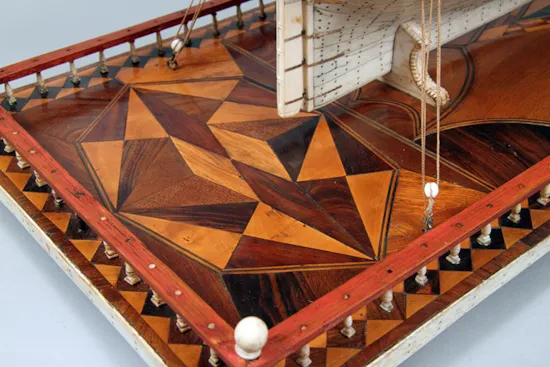
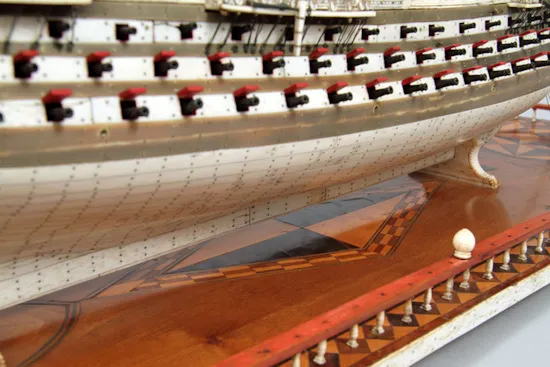
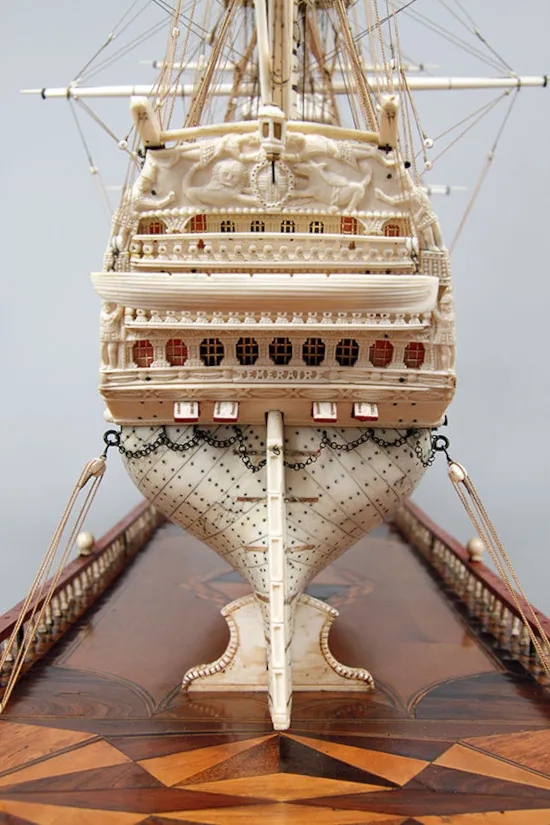
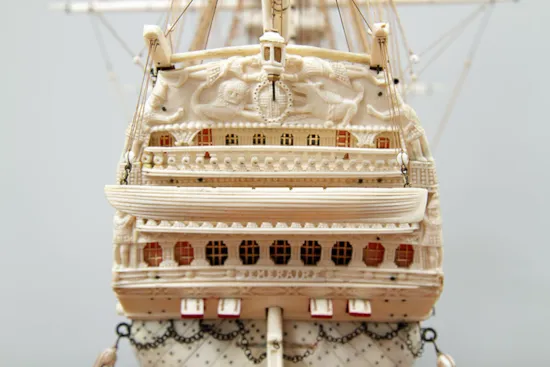

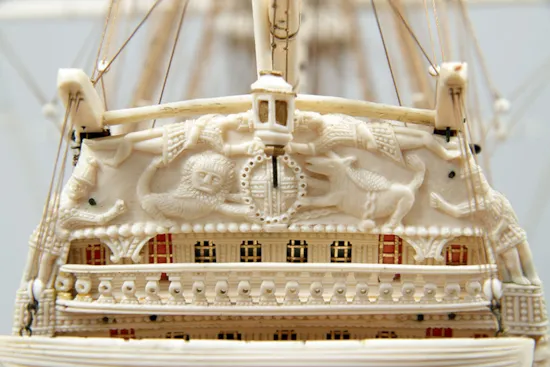
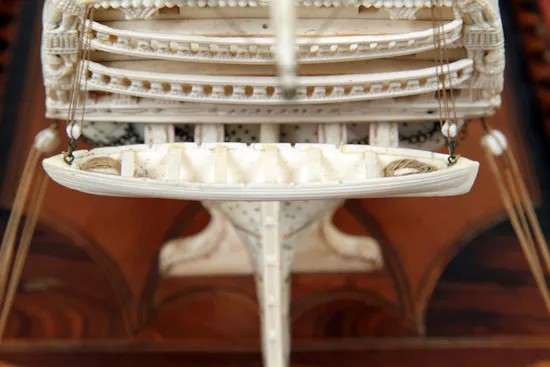
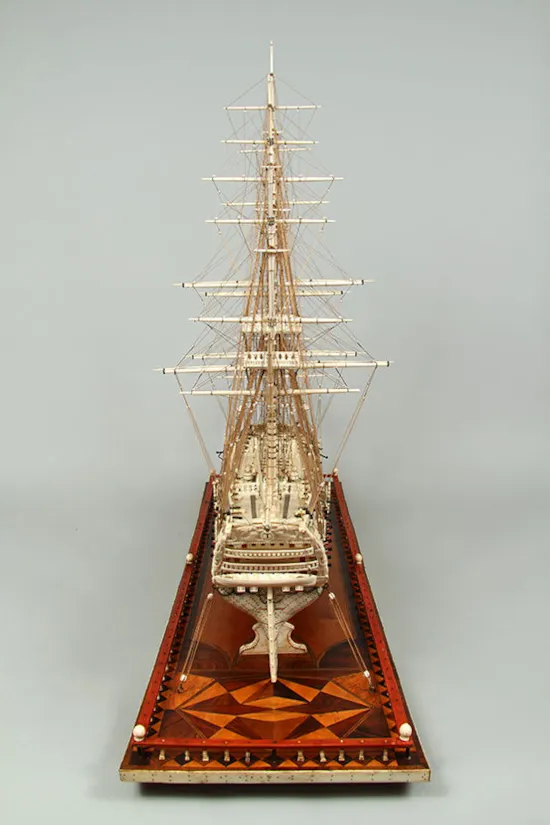
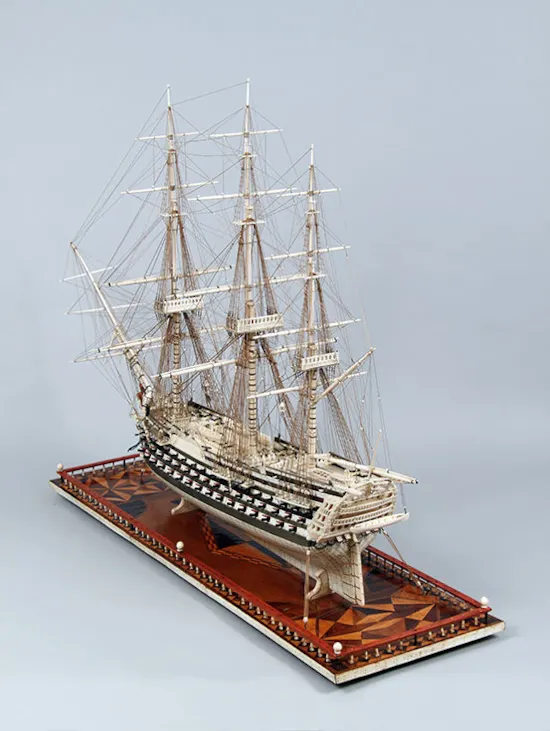
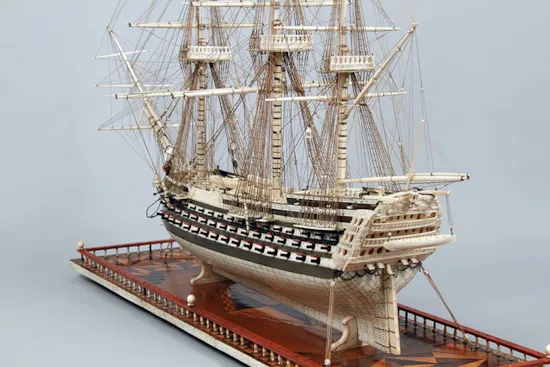
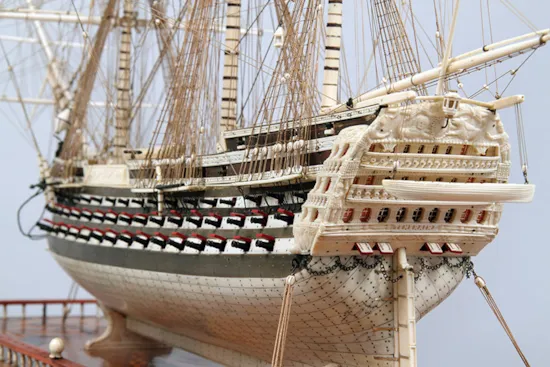
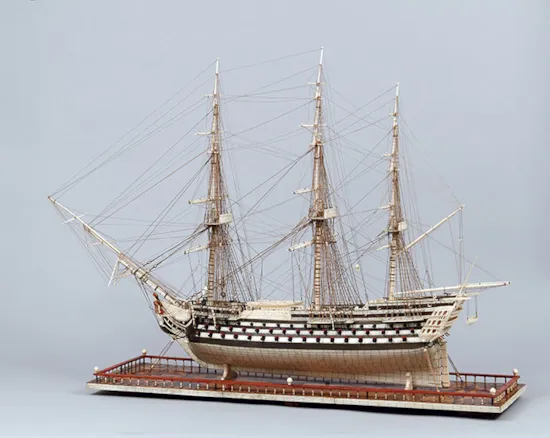
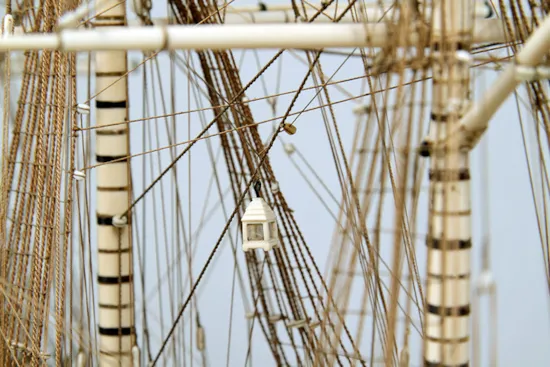
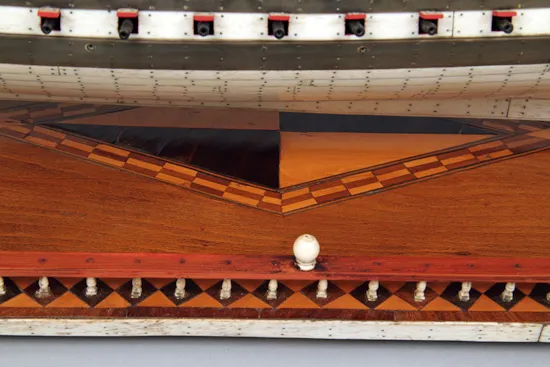
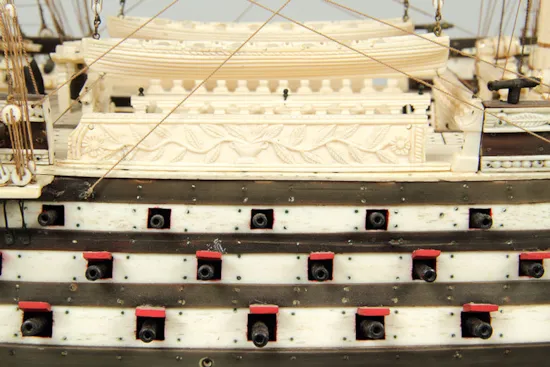
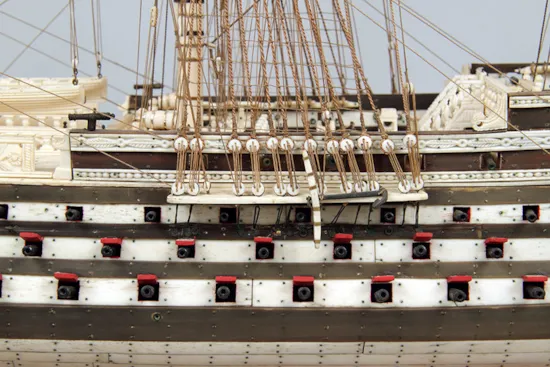
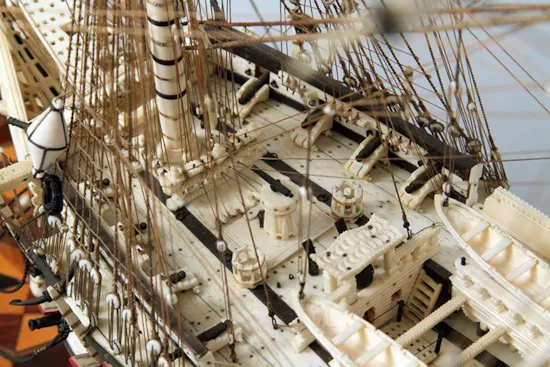
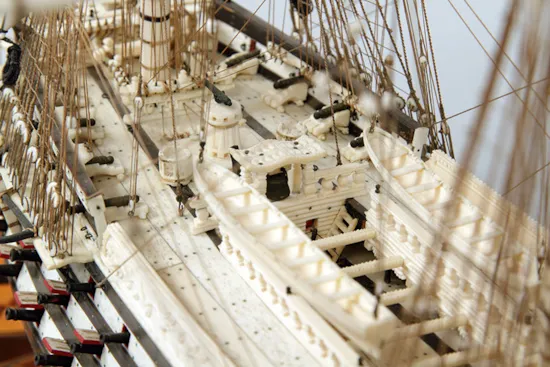
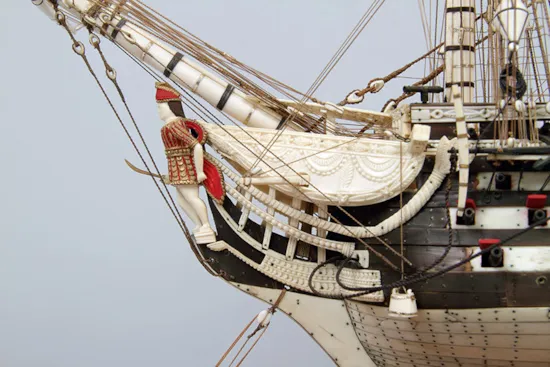
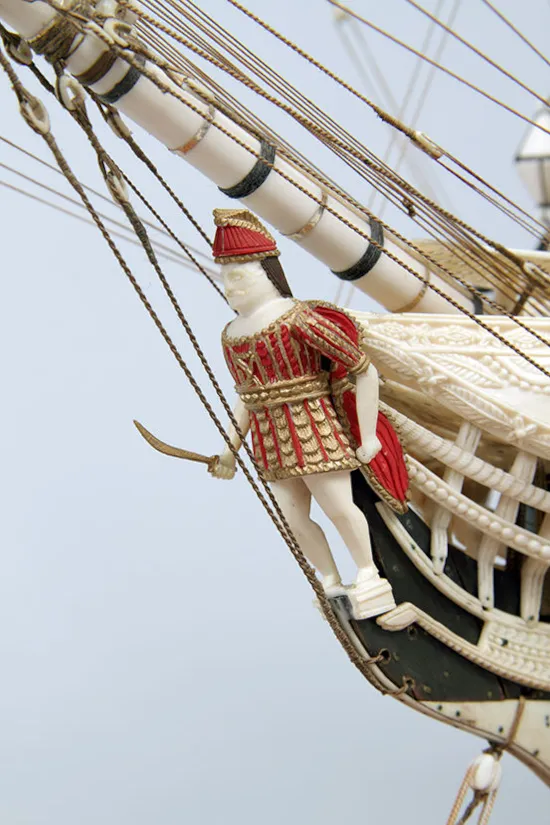
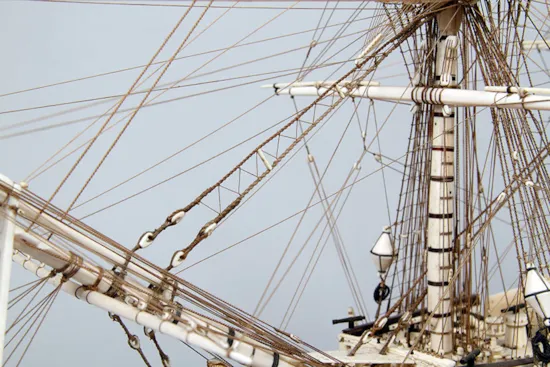
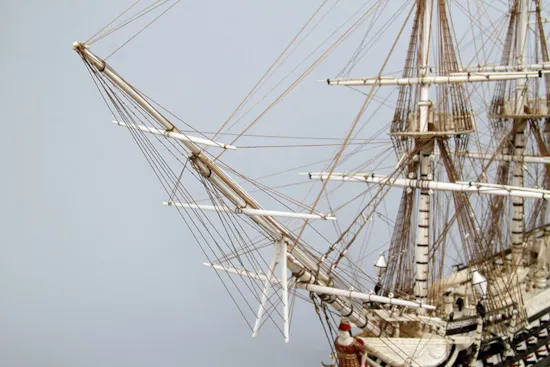
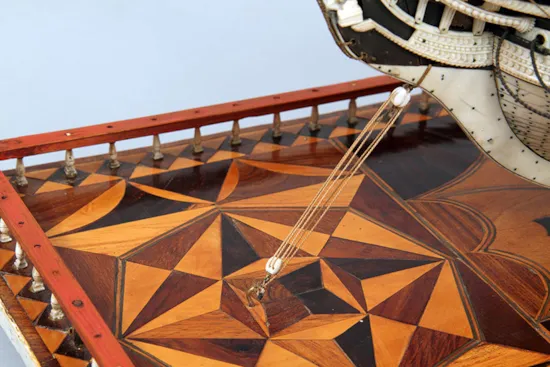
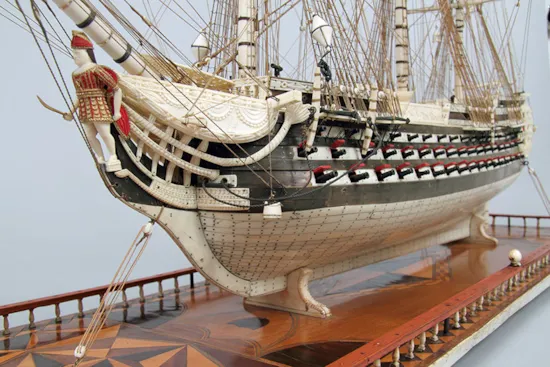













































YOU MAY ALSO LIKE

